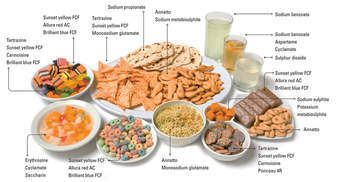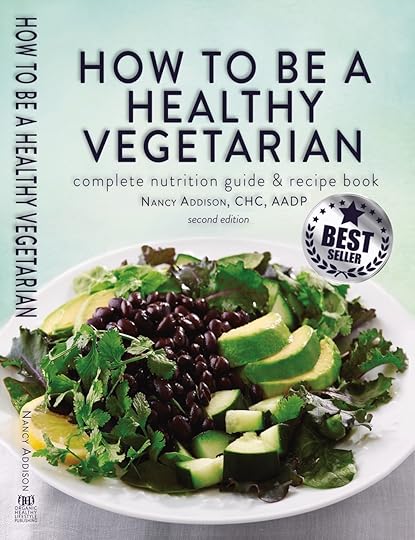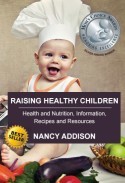Nancy Addison's Blog, page 8
September 27, 2016
Look for me in this new documentary: “Eating You Alive”

Paul, Nancy and Merrilee – Filming in Dallas
Look for me in this new documentary!
Eating You Alive
Click here for the trailer.
https://www.youtube.com/watch?v=M8sGE5n-i1Q
Here are some details:
The website www.eatingyoualive.com
I’m so excited to announce that EYA is set to hit screens in October!
There are many pre-release events that will be happening across the country in places like Oklahoma City, Detroit, Washington D.C., NYC, Atlanta, Nashville, Huntsville, Chicago, Denver, Little Rock, Austin, Sacramento, San Francisco, Portland, Seattle and more!
These events will include a Q & A session and a chance for us to finally get to meet all of you who have been so supportive and hear your “Whole Food Plant Based” stories!
So keep checking as there are more details to come about these events and the nationwide theatrical release in November!
The message is that a whole food plant based diet is the optimum approach to preventing, treating and reversing chronic diseases, as well as addressing the issues of environment and economy (the fact that we are bankrupt as a country and swimming in healthcare costs associated with these diseases.)
The film features leading medical experts, Dr. Neal Barnard, Dr. T. Colin Campbell, Dr. Dean Ornish, but also Oscar winning director James Cameron, Environmental activist Suzy Amis Cameron, entertainer/magician Penn Jillette and Samuel L. Jackson.
Click here to see the pre-release page on the website and to purchase tickets.
1) ACADEMY RELEASE DATES:
– L.A. Sundance Sunset Cinema December 2-8, 2016 *event details TBA
– NYC ICF theater December 12-20, 2016 *event details TBA
2) PRE-RELEASE EVENTS:
– October 2, Morristown NJ Vegfest
– October 4, Birmingham MI PBNSG
– October 5, Ann Arbor MI Marc Ramirez
– October 6 Huntsville AL (TBA)
– October 8 Chattanooga TN (TBA)
– October 9 Nashville TN (TBA)
– October 11 Little Rock AR (TBA)
– October 12 Oklahoma City OK (TBA)
I hope you have a chance to see it this coming year!
Click here to check out my article on fresh produce storage tips on the website!
Love, Nancy
September 19, 2016
Highland Hospital’s Chief Of Cardiology Goes Vegan
Health News!
Highland Hospital’s Chief Of Cardiology Goes Vegan
The chief of cardiology for Highland Hospital decided to change to a vegan lifestyle and lost 57 pounds.
It has been proven over and over again that a plant based diet helps reverse and prevent heart disease and can even help reverse the damage.
If you have weight or heart problems and you are thinking about trying a more plant based eating plan, you may want to read my cookbook, How To Be A Healthy Vegetarian.
Here is the link to view it on Amazon: myBook.to/vegetarianbook
Here is the link to the article about the Chief of Cardiology going Vegan. https://lnkd.in/egDkUM7
September 3, 2016
Could Food Additives And Dyes Be Causing Your Child’s ADHD Or Hyperactivity?

Could Food Additives And Dyes Be Causing You Or Your Child’s ADHD Or Hyperactivity?
As we get back to school or work after the summer break, I thought I’d touch on something that affects us all, if we are eating any kind of processed food.
It would be helpful to be aware of this whenever you are purchasing any snacks or meals from a fast food restaurant, or buying any packaged items.
I have researched how additives,
preservatives, and food color dyes can cause so many health problems, as well as emotional and behavioral problems in children and adults.
ADHD and hyperactivity in children and adults can often be misdiagnosed, because they can result from additives in foods. (1, 2) Numerous studies that I found on food dyes are quite alarming.
For example, “In 2007, a carefully designed, randomized, double-blind, placebo-controlled study published in the journal, The Lancet, concluded that a variety of common food dyes and the preservative sodium benzoate cause some children to become measurably more hyperactive and distractible.” (3)
This wasn’t the first time such a link had been established. In 1994, researchers found that 73 percent of children with ADHD responded favorably to an elimination diet that included removing artificial colors. (4)
Increasingly since the 1960s, more people have come to depend on processed foods that contain colored dyes.
Many foods such as juices, soft drinks, candy, gelatins, breakfast cereals, baked and snack foods, salad dressings, frozen desserts, and even food you wouldn’t normally suspect, such as pickles or fresh produce, are coated in dye to make them look more pleasing.
A 68-page report called Food Dyes: A Rainbow of Risks by the Center for Science in the Public Interest, states this:
In addition to considerations of organ damage, cancer, birth defects, and allergic reactions, mixtures of dyes (and Yellow 5 tested alone) cause hyperactivity and other behavioral problems in some children.
Because of that concern, the British government advised companies to stop using most food dyes by the end of 2009, and the European Union is requiring a warning notice on most dye-containing foods after July 20, 2010.(5)
Many major food manufacturers use natural dyes in European foods, while still using the chemical dyes in the
American foods, because there is still no law in the U.S. banning these food dyes.
As the Food Dyes report discusses:
Studies of the nine dyes currently approved by the FDA suggest, if not prove, that most of the dyes cause health problems, including cancer, hypersensitivity, or neurotoxicity (including hyperactivity). . . . The health concerns indicate that most dyes fail the FDA’s safety requirement ‘that there is convincing evidence . . . that no harm will result from the intended use of the color additive.’
Fortunately, numerous natural colorings could be used in place of dyes: beet juice, beta-caramel, carotene, carrot juice, chlorophyll, elderberry juice, grape juice/skin, paprika extract, purple corn, purple sweet potato, red cabbage, and turmeric.(6)
In many ways, we may be able to help both our children and ourselves by cleaning up our diets, teaching by example how to eat healthier, and waiting for positive signs of improvement, before we resort to any kind of medication.
This will benefit all of us for life.
Sources;
1. Red Dye 40: Could It Cause Kids to Be Hyper?” http://www.wltx.com/story/news/2014/0...
2 Marvin Boris, MD, and Francine S. Mandel, PhD. “Food and
Additives are Common Causes of the Attention Deficit Disorder in Children.” Annals of Allergy. October 1994, Volume 73, October 1994.
3. Dr. Joseph Mercola. “First Ever Study Reveals Amounts of Food Dyes in Brand Name Foods.” May 22, 2014. Newsletter. http://articles.mercola.com/sites/art... rtificial-fooddyes. aspx
4. Ibid
5.. Sarah Kobylewski, Ph.D. Candidate. Food Dyes: A Rainbow of
Risks. Center for Science in the Public Interest. Molecular
Toxicology Program. University of California. p. vi.
6. Ibid. p. 15.
copyright@nancyaddison2015
Click here to see Nancy’s Award Winning, Best Selling books on Amazon.
Purchase your copy today!
Leave a comment and join in the conversation!
August 27, 2016
Types of Vegetarians

Types of Vegetarians
Do you ever get confused about the definitions of the various types of ways people eat?
Well, here is a little explanation about the various definitions having to do with eating a more plant based diet.
The mainstream vegetarian is the ovo-lacto vegetarian, who avoids all animal products that require the slaughtering of an animal. In addition to plants, ovo-lacto vegetarians eat non-fertile eggs and dairy products.
Cheese is allowed in the ovo-lacto vegetarian diet, as long as it doesn’t contain animal rennet, which is composed of enzymes usually taken from calves’ stomachs. Rennet is added to make cheese firm. Vegetarian cheeses are made with vegetable rennet, vegetable enzymes, or figs instead.
A vegan avoids all products that have an animal origin, including dairy and eggs. A vegan may avoid honey because it is made by bees, and collecting honey can deprive the bees of their natural, healthy food source for winter.
In addition to eating a plant-only diet, many vegans choose to not exploit living creatures in any way. So, they will not wear clothes made from wool, leather, silk, or fur, or use products that contain gelatin, lanolin, rennet, whey, casein, beeswax, shellac, carmine, bone, or animal fat.
People who eat chicken and fish are not vegetarians, though many call themselves vegetarian. There is frequent confusion about this point. People who eat fish but no red meat or poultry are pescatarians.
Sometimes, I am invited to dinner and served chicken, shrimp, or fish based on the misconception that a vegetarian eats chicken and seafood. When this happens to you, simply explain what foods you do or do not eat. In my experience, educating people in a kind and informative manner can turn the situation around, creating a setting that can accommodate you and be fun and educational for everyone concerned.
When it comes to choosing the right vegetarian diet, a person should see how his or her body reacts to certain foods and lifestyles. It is all about balance.
The diet that works for me and my O blood type and lifestyle may not be the perfect diet for someone else. Try the various vegetarian diet choices that your heart tells you to try, and see what works. Some people’s diet choices may change over time along with age, environment, lifestyle, and circumstance.
It helps to allow a little flexibility, especially when you travel to foreign countries. Having everything set in stone can make it more difficult to maintain your vegetarian lifestyle when life throws you the unexpected. Balance, flexibility, and the ability to live in the moment can be the difference between success and joy or anger, frustration, and failure.
Find what works for you, and listen to your heart and your own body. They will tell you the best choice of vegetarian food for you. You are the best guide and judge of your body and your health.
For many of us in transition with new food choices or life in general, it takes baby steps. Some people will find that eating a little cheese or eggs now and then makes the transition easier. Later, they may be able to cut something out completely—or not.
Becoming a vegetarian is a journey. Simply start the journey, and see where it takes you!
Bon
Appétit!
Copyright@nancyaddison2015
For more information like this, you may want to sign up for my free newsletter (sign up form is in the banner of my website) or you may like one of my 4 cookbooks.
Click here to see them on Amazon.
Leave a comment and join in the conversation!
I would love to hear from you!
August 14, 2016
Healthy Snacks For Nursing Mom’s And Tot’s

Healthy Snacks For Nursing Mom’s And Tot’s
Eating a well balanced diet is always a good choice for new moms. But many new moms wonder how breastfeeding will affect their child and their diet. You probably don’t need to make any major changes to what you eat or drink when you’re nursing, though there are a few important considerations to keep in mind, like avoiding alcohol, pharmaceutical drugs of any kind and avoiding caffeine are some of the most important. Also, it’s important to minimize your exposure to contaminants in your food, body care products (they go directly into your blood stream through your skin, without being filtered) or environment, while you’re nursing. Pesticides, insecticides, and other chemicals that you ingest or put on your body will get into your breast milk.
You want to be aware that your body also draws on its reserves, when you don’t get the nutrients you need from your diet and that can eventually make you become depleted. That is not good, because you need strength and stamina to handle the physical demands of caring for your new baby. So a high nutrient rich diet is recommended.
Some of the best snacks are simply fresh fruits and vegetables cut up into bite sized pieces. I frequently take raw, freshly washed green beans or raw okra and rub or sprinkle unrefined sea salt on them. They make a great snack! Green beans have an insulin-type of effect on the body, so they make particularly good snacks for anyone who has to regulate their blood sugar.
Place about a half of a cup in small snack containers or zip lock baggies. That way, you can then grab them quickly throughout the week for quick snacks. They taste delicious.
Hummus is a high fiber food that is easy and inexpensive to make or buy. I make mine with a variety of beans. Hummus goes well with whole grain, gluten-free crackers, chips, cut up veggies (example: red bell pepper or sliced cucumber), pita chips, etc. I use it as my sandwich spread for many things. It is a delicious high protein staple to keep around for emergency snacks or meals.
Be careful to avoid artificial ingredients and additives like dyes, sweeteners, flavorings, growth hormones and antibiotics (given to animals) and toxins from the ocean or environment (as in fish). They can be toxic to you and your child. I expand on this and how it can affect your child’s brain health as well as their behavior and physical growth in my healthy cookbook, “Raising Healthy Children.”
Raisins and dates (pitted) are both a good source of carbohydrates for energy.
Dates are an excellent source of potassium, sulphur, iron, and magnesium.. Raisins are also rich in B vitamins, iron, and potassium. This might seem surprising, but compounds found in raisins fight bacteria in the mouth that cause cavities and gum disease.
Also, nutrient dense smoothies with the proper amount of healthy fats, super foods, protein, etc. are an easy way to get intense nutrition in an easy effective way.
I have many great recipes in my healthy, award winning cookbook: “Raising Healthy Children.”
If you are concerned about pesticides or the high cost of organically grown food, you can check the list created by the Environmental Working Group, and their list of the worst foods tested for highest for pesticides, They call them the dirty dozen. They list them from worst to least. Some of them listed as the most toxic are: strawberries apples, celery, peaches, spinach, imported nectarines and grapes, sweet bell peppers, potatoes, blueberries, lettuce, and kale and collard greens.
The clean fifteen list of fruits and vegetables that had the lowest amount of pesticide residue were onions, sweet corn, pineapples, avocados, asparagus, sweet peas, mangoes, eggplant, cantaloupe, kiwi, cabbage, watermelon, sweet potatoes, grapefruit, and mushrooms.
If you are concerned about losing some of the weight you had gain from pregnancy, you might plan to take up to a year to get back to your pre-pregnancy/normal weight.
Some new moms find the weight just seems to fall off, while others don’t lose much. This will all depend your food choices, your activity level, your metabolism and on your own body,
I suggest avoiding any kind of weight loss plan for a couple of months after your child is born. A low calorie diet can drain your energy and limit your milk supply. Also, always stay hydrated. This is critically important for your and your child’s health and well-being.
When you combine healthy eating with moderate exercise, this can be a safe and effective way of losing weight and getting back into shape.
Enjoy this time with your child, it goes very quickly and it’s one of the most important parts of your child’s life. So, relax, enjoy and find peaceful moments in your time together.
By Nancy Addison CHC, AADP, CSN, CPT
copyright@nancyaddison2015
For more information go to: www.organichealthylife.com
To order my award winning (Mom’s Choice Award For Excellence) and number one best selling cookbook: “Raising Healthy Children,” click here.
Leave a comment and join in the conversation!
August 5, 2016
Copper: Helping Prevent Infectious Diseases

Copper: Helping Prevent Infectious Diseases
Copper is a natural element in our world. It was used by ancient Egyptians for sterilizing drinking water, and also for sterilizing chest wounds. Greeks, Romans, and Aztecs used copper compounds to make drinking glasses, cookware, and tongue scrapers, and also to treat burns, headaches, ear infections, and many other things.
I have always used copper cookware in my home because I thought it was durable, and it handled heat well and evenly. However, I learned it also has other benefits. I read about recent studies that were conducted on copper surfaces in an intensive care unit. Since healthcare-acquired infections are such a huge problem in medical care facilities, I found these studies very interesting.
One study tested copper surfaces in intensive care units and then measured the percentage of germs and bacteria in those rooms. Here is a quote from the article:
“Results: The rate of HAI and/or MRSA or VRE colonization in ICU rooms with copper alloy surfaces was significantly lower than that in standard ICU rooms. Conclusions: Patients cared for in ICU rooms with copper alloy surfaces had a significantly lower rate of incident HAI and/or colonization with MRSA or VRE than did patients treated in standard rooms.”1
The study involved sixteen intensive care hospital rooms. Researchers put copper surfaces in half (eight) of those rooms. The result was that the rooms with the copper surfaces had about half the rate of infectious germs and MRSA (methicillin-resistant Staphylococcus aureus) infections compared to the rooms without copper surfaces.
Another study found that the bacteria counts on copper surfaces were 83% less than on non-copper surfaces. That is huge, wonderful, and so easy to implement. Since then, at least 15 hospitals across the country have installed, or are considering installing, copper components on “high-touch” surfaces that are easily contaminated with microbes: the faucet handles on sinks, cabinet pulls, toilet levers, call buttons, light switches, door handles, and IV poles.2
If you are remodeling a kitchen, copper surfaces would be a healthy countertop to install. Furthermore, copper was believed throughout history to support the lymphatic system. This is fascinating.
So, in conclusion, using copper in our homes, in our pipes, and in our cookware or drinking glasses can have a very positive effect on our health.
© 2016 by Nancy Addison. All Rights Reserved.
For more information go to: OrganicHealthyLifestyle.com
Sources:
1. Salgado, Cassandra, et. al. (May, 2013). “Copper surfaces reduce the rate of healthcare-acquired infections in the intensive care unit.” Infect Control Hosp Epidemiol, 34(5): 479-86. PMID: 23571364. (Article Affiliation: Department of Medicine, Medical University of South Carolina.)
2. Sun, Lena. (September 20, 2015). “The bacteria-fighting super element that’s making a comeback in hospitals: copper”. Washington Post. https://www.washingtonpost.com/national/health-science/the-bacteria-fighting-super-element-making-a-return-to-hospitals-copper/2015/09/20/19251704-5beb-11e5-8e9e-dce8a2a2a679_story.html?tid=a_inl
Leave a comment and join in the conversation! I would love to hear from you!
If you love this post, you may enjoy Nancy’s books.
Click here to see her award winning, best selling healthy cookbooks!
July 27, 2016
21: Stress & Empowering Yourself To Heal
Stress & Chronic Disease are very prevalent in today’s world. If not diminished, chronic stress can lead to major illness. Leading organic health expert and radio show host, Nancy Addison introduces natural approaches to relieving and reversing the effects of stress.
What you’ll learn from this episode:
Nancy discusses the various ways in which you can alleviate stress
How to relieve and reverse the ill effects of prolonged stress
Ways to program subconscious beliefs naturally.
Nancy’s website: www.organichealthylife.com
Nancy’s books can be ordered on Amazon: http://amzn.to/1ZYqUo1.
22: Nancy Addison on Magnesium
Nancy Addison (Award Winning, Best Selling Author & Organic Health Expert) talking with Richard Kemp (Peabody Award Winner and host of Agri-Business News, KLGD fm 106.9 #theCountryGiant) about magnesium.
Things you’ll learn from this episode:
Ways to supplement with Magnesium
Effects of lack of it
Benefits you get from it
Why you would want to have more added to your diet for optimum health.
Listen to the full podcast by clicking on the Libsyn link above.
July 22, 2016
20: Exercise For A Healthy & Fun Life!
Dance can be a fun way to get your exercise! Javin Bay of Dance Fit discusses with organic health expert & radio show host Nancy Addison about how he found dance to help him and his family’s weight and health. He discusses their new interactive video series they are producing, that anyone can watch and exercise with that can make your exercise fun! For more information, please visit Nancy nancy@nancyaddison or Nancy’s books on Amazon: http://amzn.to/1ZYqUo1
What you’ll learn from this episode:
Benefits of dance exercise
Fun exercise
Weight and health management
Many more
Resources:
Website: www.organichealthylifestyle.com
Books: http://www.amazon.com/Nancy-Addison/e...
July 21, 2016
19: Raising healthy children
Every parent wants to raise healthy, successful children. Award-winning author, radio show host, and mother of two healthy adult children, Nancy Addison will inspire you with proven strategies and guidelines for essential health and nutrition. The importance of encouraging physical lifestyle, healthy eating habits, positive ways of handling other childhood situations, such as peer pressure.
Nancy’s website: www.organichealthylife.com Nancy’s books can be ordered on Amazon: http://amzn.to/1ZYqUo1.
What you’ll learn from this episode:
Strategies for raising healthy children
Health and nutrition for all stages of childhood
Healthy eating habits
Physical lifestyle
Handling childhood situations, e.g. peer pressure, bullying
Many more useful information
Resources
Website: www.organichealthylifestyle.com
Books: http://www.amazon.com/Nancy-Addison/e/B00E6K5KGY



